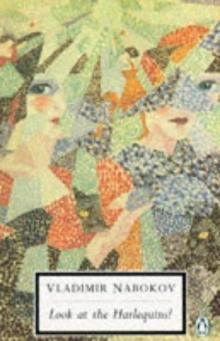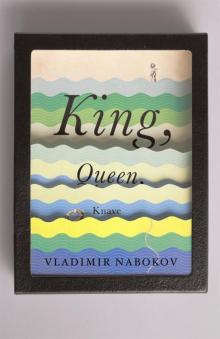- Home
- Vladimir Nabokov
Strong opinions Page 29
Strong opinions Read online
Page 29
After 10 days of this, and despite diligent subsequent exploration, only one sparse colony of sublivens was found. On that one spot my wife found a freshly emerged male on the 15th. Three days later I had the pleasure of discovering the unusual looking female. Between the 15th and the 28th, a dozen hours of windy but passable collecting weather in all (not counting the hours and hours uselessly spent in mist and rain) yielded only 54 specimens, of which 16 were females. Had I been younger and weighed less, I might have perhaps got another 50, but hardly much more than that, and, possibly, the higher ridges I vainly investigated between 12,000 and 14,000 feet at the end of July, in the Magdalena-snowi-centaureae zone, might have produced subItvens later in the season.
The colony I found was restricted to one very steep slope reaching from about 10,500 to a ridge at 11,000 feet and towering over Tomboy Road between «Social Tunnel» and «Bullion Mine». The slope was densely covered with a fine growth of lupines in flower (Lupintis parviflorus Nuttall, which did not occur elsewhere along the trail) and green gentians (the tall turrets of which were assiduously patronized by the Broad-Tailed Hummingbird and the White-Striped Hawk-moth). This lupine, which in the mountains of Utah is the food-plant of an alpine race of L. melissa {annetta Edw.), proved to be also the host of L. sublivens. The larva pupates at its base, and in dull weather a few specimens of both sexes of the imago could be found settled on the lower leaves and stems, the livid tone of the butterflies' undersides nicely matching the tint of the plant.
The female of subiwensis of a curiously arctic appearance, completely different from the richly pigmented, regionally sympatric, locoweed and alfalfa-feeding L. melissa or from the melissaYike females of Wyoming and Idaho argyrognomon (idas) races, and somewhat resembling argyrognomon (idas) forms from northwestern Canada and Alaska (see for instance in the abovementioned work, p. 501 and plate 8, fig. 112). It also recalls a certain combination of characters that crops up in L. melissa annetta.
Here is a brief description of L. sublivens female: Upperside of a rather peculiar, smooth, weak brown, with an olivaceous cast in the living insect; more or less extensively dusted with cinderblue scales; triangulate greyish blue inner cretules generally present in the hindwing and often accompanied by some bluish or greyish bleaching in the radial cells of the forewing; aurorae reduced: short and dullish in the hindwing, blurred or absent in the forewing, tending to disappear in both wings and almost completely absent in 3 specimens; lunulate pale greyish blue outer cretules very distinct in both wings; underside similar to that of the male.
Deposited: 20 males and 10 females in the Cornell
University collection, and 18 males and 6 females in the Museum of Comparative Zoology, Harvard University.
Published in The Lepidopterists' News,
New Haven, Conn., Vol. 6, August 8, 1952, pp. 3536.
ON SOME INACCURACIES IN KLOTS' FIELD GUIDE
In connection with «Blues», I wish to correct two or three slips in Professor Alexander B. Klots' important and delightful book (A Field Guide to the Butterflies of North America, East of the Great Plains, Houghton Mifflin, Boston, 1951).
On p. 166 there is a misprint: «Center (formerly Karner)» should be, of course, «Karner (formerly Center)». Incidentally I visit the place every time I happen to drive (as I do yearly in early June) from Ithaca to Boston and can report that, despite local picnickers and the hideous garbage they leave, the lupines and Lycaeides samuelis Nab, are still doing as fine under those old gnarled pines along the railroad as they did ninety years ago.
On p. 165, another, more unfortunate transposition occurs: «When fawn colored, more vivid in tone» should refer not to Lycaeides argyrognomon idas] but to L. melissa, while «wings beneath, when fawn colored, duller in tone» should refer not to L. melissa but to L. argyrognomon [idas] (see my «Nearctic Lycaeides», Bull. Mus. Comp. Zool., vol. 101: p. 341: 1949).
On pp. 162164, the genus Brephidium (in company with two others) is incorrectly placed between Hemiargus and Lycaetdes. I have shown in my paper on Neotropical Plebejinae (Psyche, vol. 52: pp. 161; 1945) that Hemiargus (sensu lato) and Lycaeides belong to the same group (sub-family Plebejinae — or supergenus Plebejus; the rank does not matter but the relationship does). Brephidium, of course, stands on the very outskirts of the family, in a highly specialized group, immeasurably further removed from Hemiargus or Lycaeides than, say, Lycaena. This is where my subfamilies come in handy since at least they keep related things in one bunch and eject intruders. Views may differ in regard to the hierarchic element in the classification I adopt, but no one has questioned so far the fact of the structural relationship and phylogenetic circumstances I mean it to reflect. The whole interest of Hemiargus is that it is allied to Lycaetdes etc., while bearing a striking superficial resemblance to an African group with which it does not have the slightest structural affinity. Systematics, I think, should bring out such points and not keep them blurred in the haze of tradition. I am perfectly willing to demote the whole of my «subfamily» Plebejinae to a supergenus or genus Plebejus (Plebejus ceraunus, isola, thomasi, idas, melissa, aquilo, saepiolus, etc.) but only under the condition that it include exactly the same species, in the same groupings ( subgenera or nunibered sections, as you will) and in the same sequence of groups, without intrusions from groups assigned structurally to other «subfamilies» (and then, of course, lygdamus, battoides, and piasus should be all in Scolitantides or its equivalent). However, I still think that the formality of generic names for the groupings is a better method than going by numbers, etc. Names are also easier to handle in works on zoological distribution when it is important to bring out the way a group is represented in different regions of the world. Generally speaking, systematics is not directly concerned with the convenience of collectors in their dealings with small local faunas. It should attempt to express structural affinities and divergences, suggest certain phylogenetic lines, relate local developments to global ones — and help lumpers to sort out properly the ingredients of their lumps.
The Lepidopterists' News, Vol. 6, August 8, 1952, p. 41
BUTTERFLY COLLECTING IN WYOMING, 1952
A visit to Wyoming by car in July-August 1952 was devoted to collecting in the following places:
Southeastern Wyoming: eastern Medicine Bow National Forest, in the Snowy Range, up to approximately 10,500 ft. alt. (using paved road 130 between Laramie and Saratoga); sagebrush country, approximately 7,000 ft. alt., between Saratoga and Encampment, east of paved highway 230; marshes at about the same elevation between eastern Medicine Bow National Forest and Northgate, northern Colorado, within 15 miles from the Wyoming State Line, mainly south of the unpaved road 127; and W. Medicine Bow National Forest, in the Sierra Madre, using the abominable local road from Encampment to the Continental Divide (approximately 9,500 ft. alt.).
Western Wyoming: sagebrush, approximately 6,500 ft. alt, immediately east of Dubois along the (well-named) Wind River; western Shoshone and Teton National Forests, following admirable paved road 26, from Dubois towards Moran over Togwotee Pass (9,500 ft. alt.); near Moran, on Buffalo River, approximately 7,000 ft. alt.; traveling through the construction hell of the city of Jackson, and bearing southeast along paved 187 to The Rim
(7,900 ft. alt.); and, finally, spending most of August in collecting around the altogether enchanting little town of Afton (on paved 89, along the Idaho border), approximately 7,000 ft. alt., mainly in canyons east of the town, and in various spots of Bridger National Forest, Southwestern part, along trails up to 9,000 ft. alt.
Most of the material collected has gone to the Cornell University Museum; the rest to the American Museum of Natural History and the Museum of Comparative Zoology.
The best hunting grounds proved to be: the Sierra Madre at about 8,000 ft. alt., where on some forest trails I found among other things a curious form (? S. secreta dos Passos & Grey) of Speyeria egleis Behr flying in numbers with S. atlantis hesperis Edw. and S. hydaspepurpurascensH. Edw., a very eastern locality
tor the latter; still better were the forests, meadows, and marshes about Togwotee Pass in the third week of July, where the generally early emergences of the season were exemplified by great quantities of Erebia theona ethela Edw. and E. callias callias Edw. already on the wing; very good, too, were some of the canyons near Afton.
Here are a few notes on what interested me most in the field: Boloria, Colias, certain Blues, and migratory or at least «mobile» species.
Of Boloria I got seven species, of the eight (or possibly ten) that occur within the region. Plunging into the forest south of route 130 on the western slopes of the Snowy Range, I found B. selene tollandensis B & McD. not uncommon on a small richly flowered marsh at about 8,000 ft. alt.; also on marshes north of Northgate and on Togwotee Pass. On July 8, I spent three hours collecting a dozen fresh specimens of B. eunnmiq qlticolq B & McP., both sexes, on a tiny very wet marsh along the eastern lip of the last lake before reaching Snowy Range Pass from the west, possibly the same spot where Klots had taken it in 1935 (Journ. N. Y. Ent. Soc. 45: p. 326; 1937). I met with the same form on a marsh near Peacock Lake> Longs Peak. Colorado, in
1947. Forms of B. titania Esp. (mostly near ssp. helena Edw.) were abundant everywhere above 7,500 ft. alt. By the end of July B. freija Thunb. was in tatters near Xogwotcc Pass (it had been on the wane in June, 1947, on marshes near Columbine Lodge, Estes Park; and on Hoback River, Tetons, in early July, 1949). Of the beautiful B. frigga sagata B. & Benj. I took two 66 (fresh but frayed) near Togwotee Pass. Of B. toddi Holland ssp. I took a very fresh 6 in early July in the Snowy Range at 8,000 ft. alt. and a couple of days later, acting upon a hunch, 1 visited a remarkably repulsivelooking willowbog, full of cowmerds and barbed wire, off route 127, and found there a largish form of B. toddi very abundant — in fact, I have never seen it as common anywhere in the west; unfortunately, the specimens, ot which 1 kept a score or so, were mostly faded — and very difficult to capture, their idea of sport being to sail to and fro over the fairly tall sallows that encompassed the many small circular areas (inhabited only by Plebeius saepiolus Boisd. and Polites utahensis Skin.) into which the bog was divided by the shrubs. Another species 1 had never seen to be so common was B. kriemhild Strecker which I found in all the willowbogs near Togwotee Pass. In regard to Colias I could not discover what I wanted — which was some geographical intergradation between C. scudderi Reakirt, which I suggest should be classified as C. palaeno scudderi (Reakirt) (common everywhere in the Medicine Bow National Forest), and C. pelidne skinneri Barnes (locally common near Togwotee Pass and above Afton). I was struck, however, by the identical ovipositing manners of C. scudderi and C. skinneri 99 which were common in the densest woods of their respective habitats, laying on Vaccinium. I found C. meadi Edw. very common on Snowy Range Pass. It was also present at timberline near Togwotee Pass and east of it, below timberline, down to 8,000 ft. alt. in willowbogs, where it was accompanied by another usually «Hudsonian» species, Lycaena snowt?Edw.,
the latter represented by undersized individuals. (In early July, 1951, near Telluride, Colorado, I found a colony of healthy Colias meadi and one of very sluggish Pargus centaureae freija Warren in aspen groves along a canyon at only 8,500 ft. alt.) On a slope near Togwotee Pass at timberline I had the pleasure of discovering a strain of C. meadi with albinic 99. The species was anything but common there, but of the dozen 99 or so seen or caught, as many as three were albinic. Of these my wife and I took two, hers a dull white similar to C. hecla «pallida», mine slightly tinged with peach (the only other time I saw a white C. meadi was at the base of Longs Peak, 1947, where the species was extremely abundant).
In 1949 and 1951, when collecting Lycaeides in the Tetons, all over Jackson Hole, and in the Yellowstone, I had found that to the north and east L. argyrognomon (idas) longinus Nab, turns into /.. argyrognomon (idas) scudderi F.riw. but I had not solved the problem of the L. melissa strain so prominent in some colonies of L. argyrognomon longinus (i.e. Black Tail Butte near Jackson). I had conjectured that hybridization occurs or had occurred with wandering low elevation L. melissa (the rather richly marked «Artemisian» L. melissa — probably in need of some name) that follows alfalfa along roads as Plebeius saepiolus does clover. In result of my 1952 quest the situation appears as follows. The most northern point where typical L. longinus occurs is the vicinity of Moran, seldom below 7,000 ft. alt. and up to 11,000 at least. It spreads south at those altitudes for more than a thousand miles to the southern tip of Bridger National Forest but not much further (I have not found it, for instance, around Kemmerer). I have managed to find one L. melissa, a fresh 6, in August, 1952, in a dry field near Afton, less than a mile from the canyon into which both sexes of L. longinus descended from the woods above. At eastern points of the Bridger and Shoshone Forests, L. longinus stops definitely at The Rim, west of Bondurant, and at Brooks Lake (about 7,500 ft. alt.) some twenty miles west of Dubois. Very small colonies (seldom more than half-a-dozen specimens were taken in any one place) of L. melissa were found around Dubois at 6,500 ft. alt. or so (agricultural areas and the hot dry hills). A colony of typical (alpine) L. melissa melissa as described by Edwards, was found just above timberline in the Sierra Madre. The search for L. melissa in various windy and barren localities in the sagebrush zone in midJuly led to the finding of a rather unexpected Blue. This was Plebeius (Icaricia) shasta Edw., common in the parched plain at less than 7,000 ft. alt, between Saratoga and Encampment flying on sandy ground with Phyciodes mylitta barnesi Skinner, Satyrium fuliginosa Edw., and Neominois ridingsi Edw. It was also abundant all over the hot hills at 6,500 ft. alt. around Dubois where nothing much else occurred. I have not yet been able to compare my specimens with certain series in the Museum of Comparative Zoology, Harvard, but I suggest that this lowaltitude P. shasta is the true P. minnehaha Scudder while the alpine torm which 1 tound in enormous numbers above timberline in Estes Park (especially, on Twin Sisters) and which collectors, following Holland's mislead, eaH «minnehaha» is really an described race.
As to migratory species observed in Wyoming, 1952, I distinguish two groups: (1) latitudinal migrants — moving within their zones of habitat mainly in a westeast (North America) or eastwest (Europe) direction and capable of surviving a Canadian Zone winter in this or that stage. Mobile, individually wandering species of Plebeius and dolias belong to this group as well as our four erratically swarming Nymphalis species which hibernate in the imaginal stage. In early August the trails in Bridger National Forest were covered at every damp spot with millions of N. californica Boisd. in tippling groups of four hundred and more, and countless individuals were drifting in a steady
stream along every canyon. It was interesting to find a few specimens of the beautiful dark western form of N. jalbum Boisd. & Lee. among the N. californica near Afton. (2) longitudinal migrants — moving early in the season from subtropical homes to summer breeding places in the Nearctic region but not hibernating there in any stage. Vanessa cardui L. is a typical example. Its movements in the New World are considerably less known than in the Old World (in eastern Europe, for instance, according to my own observations, migratory flights from beyond the Black Sea hit the south of the Crimea in April, and females, bleached and tattered, reach the Leningrad region early in June). In the first week of July, 1952, this species (offspring mainly) was observed in colossal numbers above timberline in the Snowy Range over which the first spring Hock had passed on May 28, according to an intelligent ranger. A few specimens of Euptoieta claudia Cramer were in clover fields around Afton, western Wyoming, in August. Of Leptotes marina Reakirt, one 6 was observed near Afton in August, with Apodemia mormo Kelder and «Hemiargus» (Echinargus) isola Reakirt. Both A. mormo and E. isola plant very isolated small summer colonies on hot hillsides. The H. isola specimens, which I took also in Medicine Bow National Forest, are all tiny ones, an obvious result of seasonal environment, not subspeciation. H. isola (incidentally, this is not a Latin adjective, but a fancy name — an Italian noun originally — and cann
ot be turned into «iso/tts» to comply with the gender of the generic name, as done by some writers) belongs to a neotropical group (my Echinargus) with two other species: E. martha Dognin, from the Andes, and a new species, described by me but not named, from Trinidad and Venezuela (see Psyche, 52: 34). Other representatives of neotropical groups (Graphium marcellus Cramer, «Strymon» meltnus Hiibner, Pyrgus communts Grote, Epargyreus clarus Cramer — to name the most obvious ones) have established themselves in the Nearctic more securely than
H. isola. Among the migratory Pierids, the following were observed: single specimens of Natbalis iole Boisd. all over Wyoming; one worn 6 of Pboebis eubule L. in the Sierra Madre (Battle Lake), July 9; one worn 6 of Eurema mexicana Boisd., between Cheyenne and Laramie (and a worn 9 near Ogallala, Neb.), first week of July.
The Lepidopterists' News, Vol. 7, July 26, 1953, pp. 4952.
AUDUBON'S BUTTERFLIES. MOTHS
AND OTHER STUDIES Compiled and edited by Alice Ford
Anyone knowing as little about butterflies as I do about birds may find Audubon's lepidoptera as attractive as his bright, active, theatrical birds are to me. Whatever those birds do, I am with them, heartily sharing, for instance, the openbilled wonder of «Green Heron» at the fantastic situation and much too bright colors of «Luna Moth» in a famous picture of the «Birds» folio. At present, however, I am concerned only with Audubon's sketchbook («a fifteenpage pioneer art rarity» belonging to Mrs. Kirby Chambers of New Castle, Kentucky) from which Miss Ford has published drawings of butterflies and other insects in a handsome volume padded with additional pictorial odds and ends and an account of Audubon's life. The sketches were made in the 1820s. Most of the lepidoptera which they burlesque came from Europe (Southern France, I suggest). Their scientific names, supplied by Mr. Austin H. Clark, are meticulously correct — except in the case of one butterfly, p. 20, top, which is not a Hamaerts but a distorted Zerynthia. Their English equivalents, however, reveal some sad editorial blundering: «Cabbage», p. 23, and «Miller», p. 91, should be «Bath White» and «Witch», respectively; and the two moths on p. 64 are emphatically not «Flesh Flies». In an utterly helpless account of the history of entomological illustration, Miss Ford calls Audubon's era «scientifically unsophisticated». The unsophistication is all her own. She might have looked up John Abbot's prodigious representations of North American lepidoptera, 1797, or the splendid plates of eighteenth and earlynineteenthcentury German lepidopterists, or the rich butterflies that enliven the flowers and fruit of the old Dutch Masters. She might have traveled back some thirtythree centuries to the times of Tuthmosis IV or Amenophis III and» instead of the obvious scarab, found there frescoes with a marvelous Egyptian butterfly (subtly combining the pattern of our Painted Lady and the body ot an African ally ot the Monarch). I cannot speak with any authority about the beetles and grasshoppers in the Sketchbook, but the butterflies are certainly inept. The exaggerated crenulation of hindwing edges, due to a naive artist's doing his best to render the dry, rumpled margins of carelessly spread specimens, is typical of the poorest entomological figures of earlier centuries and to these figures Audubon's sketches are curiously close. Query: Can anyone draw something he knows nothing about? Does there not exist a high ridge where the mountainside of «scientific» knowledge joins the opposite slope of «artistic» imagination? If so, Audubon, the butterfly artist, is at sea level on one side and climbing the wrong foothill on the other.

 Lolita
Lolita Laughter in the Dark
Laughter in the Dark Despair
Despair Mary
Mary The Enchanter
The Enchanter Pnin
Pnin Transparent Things
Transparent Things The Real Life of Sebastian Knight
The Real Life of Sebastian Knight Bend Sinister
Bend Sinister Invitation to a Beheading
Invitation to a Beheading The Stories of Vladimir Nabokov
The Stories of Vladimir Nabokov The Eye
The Eye Letters to Véra
Letters to Véra Speak, Memory
Speak, Memory The Gift
The Gift The Luzhin Defense
The Luzhin Defense Pale Fire
Pale Fire Glory
Glory Man From the USSR & Other Plays
Man From the USSR & Other Plays Vladimir Nabokov: Selected Letters 1940-1977
Vladimir Nabokov: Selected Letters 1940-1977 Strong opinions
Strong opinions Look at the Harlequins!
Look at the Harlequins! The Tragedy of Mister Morn
The Tragedy of Mister Morn Ada, or Ardor
Ada, or Ardor Lectures on Russian literature
Lectures on Russian literature King, Queen, Knave
King, Queen, Knave The Original of Laura
The Original of Laura